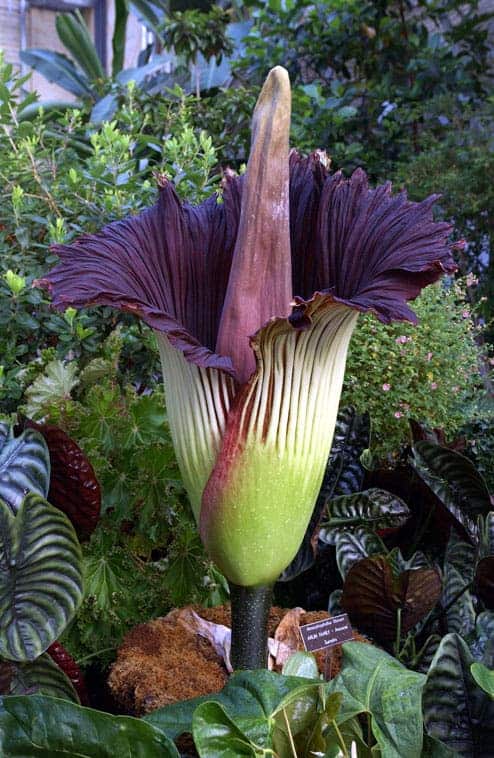Amorphophallus titanum is one of the most unique flowers in the world. Also called the “corpse flower” or the “titan penis flower,” it can grow several meters across and exhibits a strong corpse-like smell. In over 100 years, from 1889 to 2008, there have only been 157 recorded blooms. However, this year alone there have been at least seven recorded bloomings, and we don’t really know why.
According to the Royal Botanic Gardens, Kew, which hosted the first titan arums to bloom in cultivation in 1889, the plant boasts “one of the largest flowering structures and one of the foulest odours in the plant kingdom.” The smell it emanates is so foul that people have likened it to rotting flesh or cheese. But the smell helps the flower attract flies and other insects for pollination. In a way, it’s like an anti-flower – instead of attracting pollinators with sweet delicious nectar, like most flowers do, it attracts carrion feeders through a repulsive, disgusting smell.
But hey, whatever works for you.
Native to some parts of Sumatra, the gigantic flowers bloom once every six years (approximately). Because they bloom so rarely and so unpredictably, research is still in its infancy and we don’t know much about why they bloom and why the flower takes so long to develop. Now, several greenhouses have already reported bloomings this year, in a very short amount of time – and biologists are not really sure why this happens.
The likeliest theory seems to be that because greenhouses used similar seeds, the titan penis flowers are likely related. But because greenhouses acquired their seeds long ago and their origin is not known, it’s really difficult to prove this theory. Another hypothesis is that corpse flowers have increased in popularity among greenhouses and there’s simply more of them – but again, there’s no nationwide census so this is also hard to prove.
Kew greenhouses have also made an interesting observation: “flowerings have become a remarkably common occurrence—we have seen more than three times as many titan arums flower at Kew in the last six years than in the previous 120 years!” It’s not clear if this is connected in any ways to climate or heat waves.
If you want to see these flowers blooming, this is your chance. Aside from the seven recorded bloomings, The Guardian notes that corpse flowers are expected to bloom soon (or have just started blooming) in Washington, D.C., Bloomington, Indiana, and Sarasota, Florida.










